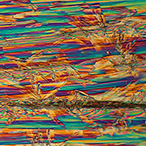Geomega Secures $4.5M Rio Tinto Deal to Transform Aluminum Industry Waste into Critical Metals Revenue
.png)
Geomega secures $4.5M Rio Tinto license for bauxite processing tech, targeting royalties from 100 global refineries recovering critical metals from waste
- Geomega Resources has secured a demonstration license agreement with Rio Tinto worth $4.5 million ($1.4 million immediate, $3 million milestone-based) to deploy proprietary bauxite residue processing technology at a Quebec facility
- The company is transitioning from exploration and recycling operations to a technology royalty business model, licensing metal extraction processes that achieve 80-85% waste reduction while recovering 6-7 commercial byproducts including scandium, gallium, and iron
- Geomega's three-circuit technology processes approximately 100 aluminum refineries' bauxite residue globally, with reagent recovery rates above 90%, and 100% owned intellectual property protection
- The Rio Tinto demonstration plant serves as proof-of-concept for commercial-scale licensing agreements structured as production royalties, enabling capital-light expansion across the global aluminum industry
- With a 20-person technical team focused on research and piloting capacity, the company is positioned to work with multiple clients simultaneously while maintaining non-exclusive licensing arrangements
Geomega Resources has announced a demonstration license agreement with Rio Tinto worth $4.5 million, marking a pivotal step in the company's evolution from mineral exploration to a technology royalty business focused on critical metals extraction. The deal validates Geomega's proprietary processing technology for bauxite residue, positioning the company to license its solution across approximately 100 aluminum refineries worldwide that collectively generate millions of tons of waste material annually.
From Exploration to Technology Licensing
CEO Kiril Mugerman, a geologist who previously worked in gold exploration for Gold Fields and as a mining analyst covering industrial minerals, joined Geomega in 2014 and became President and CEO in 2015. The company originally focused on rare earth exploration with the Montviel project during the 2011 rare earth price surge but pivoted when it became clear that "building rare earth projects back in the days was almost impossible". This strategic shift led Geomega toward rare earth magnet recycling in Quebec and eventually to broader applications of its proprietary extraction technology.
The diversification strategy emerged around 2020 when management recognised concentration risk in the permanent magnet sector. This concern drove the company to identify alternative applications for its metal extraction and reagent recycling technology.
The Bauxite Residue Opportunity
Bauxite residue, commonly known as red mud, represents one of the aluminum industry's most persistent environmental challenges. Mugerman noted that
"aluminum has been produced now for about 100 years commercially and there's still no solution for this waste problem".
Refineries typically produce between one and ten million tons of this material annually, with no economically viable method to process it. The residue contains significant quantities of critical metals including scandium, gallium, iron, high-purity silica, and alumina, but traditional approaches have failed to extract these elements economically.
Geomega's technology addresses this challenge through a three-circuit process that Mugerman described as tackling different components sequentially.
"Circuit one deals with the caustic portion of it. Then we have circuit two that's dealing with the iron. And then circuit three, that's the one that's dealing with all the critical metals".
The modular approach allows refineries to customise their implementation based on specific feed chemistry and commercial objectives.
Rio Tinto Demonstration License Structure
The Rio Tinto agreement represents a demonstration-phase license rather than a full commercial arrangement. Geomega will receive $1.4 million immediately, $100,000 in early 2026, and up to $3 million through various construction and production milestones. Mugerman emphasised the risk-sharing nature of the business model going forward to commercial scale opportunities with likely royalty arrangements rather than licensing:
"If they make money, we get paid. If they don't make money, they don't have to pay me anything up front or anything further".
The demonstration plant will process Rio Tinto's bauxite residue at a Quebec facility, serving as a proof-of-concept before potential commercial-scale deployment. Mugerman explained that "a brand new refinery today costs $2-3 billion" and minimum processing scales typically handle one million tons of residue annually, making demonstration de-risking essential for first adopters. Following successful demonstration, the parties will negotiate a commercial license structured around production royalties rather than upfront fees.
Interview with Kiril Mugerman, CEO, Geomega Resources
Technology Advantages and Market Positioning
Geomega's process achieves reagent recovery rates "well above the 90s," which Mugerman identified as critical to economic viability. The company has "run hundreds of cycles in the piloting" using the same reagents repeatedly, demonstrating sustainability and cost efficiency. Unlike traditional mining metallurgy that employs aggressive mineral acids requiring special reactor coatings, Geomega uses "weaker reagents" that are "less aggressive" and don't require specialised materials for reactors and piping.
The technology's flexibility represents another competitive advantage. Different aluminum refineries source bauxite from various locations with distinct chemical signatures - Jamaican bauxite, for example, is "always known to have the highest critical element content". Geomega tailors its process to specific residue compositions, with variability testing forming a key component of the Rio Tinto work program. Mugerman noted that the company actively seeks samples from refineries globally to demonstrate versatility: "It's in my interest to make sure that my process works on this material".
Environmental benefits include waste reduction of "roughly 80-85%" with remaining material comprising "very benign sand type material" suitable for local reuse such as road construction. This contrasts sharply with current industry practice of maintaining large tailings facilities that represent ongoing environmental liabilities.
Intellectual Property Ownership Supports Global Expansion
Geomega owns 100% of its intellectual property in perpetuity, developed in-house by CTO Dr. Pouya Hajiani and the technical team. The company employs a combination of patents and trade secrets to protect its technology, which Mugerman described as "split up in several boxes" for comprehensive protection. With approximately 20 employees, predominantly researchers and engineers, Geomega maintains capacity to work with multiple clients simultaneously while expanding piloting facilities.
Competition in the bauxite residue processing sector includes remediation-focused solutions that eliminate environmental liability without generating revenue, as well as low-value applications like brick or cement production. Mugerman observed that "every 10 years you see one or two ideas that come into the industry" but most achieve only partial waste conversion or lack economic viability. He noted that aluminum refineries "try one or two in parallel" but rarely pursue blanket approaches, typically revisiting the problem every 5-10 years when previous solutions fail.
The current critical metals demand cycle, combined with environmental pressures and supply chain localization initiatives, has created what Mugerman described as the right timing:
"Because of all the demand for critical metals, because of the environmental push on reducing the footprint, the local supply chains that are growing, it's now the time everybody is saying to look at bauxite residue as a resource and not as a waste".
Commercial Licensing Pipeline Across Refinery Network
The Rio Tinto demonstration license provides validation that will facilitate discussions with other aluminum producers. Geomega and CTO Hajiani regularly attend the Aluminium International Conference, described as "the largest aluminum conference in the world," to engage with potential clients. The company has already conducted bench-scale testing for multiple refineries at various stages of evaluation.
Mugerman emphasised that Geomega avoids consultancy work, focusing exclusively on licensable technology deployment. The non-exclusive licensing structure allows simultaneous client engagement, with the company actively expanding laboratory and piloting capacity to accelerate throughput. Bench-scale testing has become "much more efficient than three or four years ago when we started with Rio Tinto," enabling faster client progression through evaluation stages.
Commercial-scale licenses will feature different financial structures than the demonstration agreement. While Mugerman did not disclose specific royalty rates, he referenced the gold industry's evolution 20-30 years ago when companies began licensing refractory ore processing technologies, providing a framework for the aluminum sector. The key principle remains consistent:
"As long as they keep paying a royalty once it goes to commercial scale, we provide them the technology maintenance, we provide them the support that's required for them to keep running their plant".
Strategic Government Support
Geomega has received "great support over the years from the Quebec government, federal government" driven by policy priorities around critical metals production in Canada. This aligns with broader Western initiatives to establish domestic supply chains for strategic materials, particularly as geopolitical considerations influence resource security. The company's Quebec location positions it advantageously for both government support and proximity to North American aluminum production.
Beyond bauxite residue processing, Geomega continues developing its rare earth magnet recycling facility in Quebec, which Mugerman indicated "should be starting very soon". This parallel stream maintains diversification while the technology licensing model scales. The magnet recycling operation will provide near-term cash flow as demonstration and commercial bauxite processing licenses advance through longer development timelines.
The Investment Thesis for Geomega Resources
- Technology Royalty Model: Geomega is transitioning to a capital-light business model licensing proprietary metal extraction technology to aluminum refineries, avoiding the capital intensity and execution risk of traditional mining operations
- Validated Technology with Tier-1 Partner: The Rio Tinto demonstration license ($4.5 million total value) provides third-party validation of Geomega's technology, de-risking commercial deployment across the global aluminum sector's approximately 100 refineries
- Large Addressable Market: Global aluminum refineries produce millions of tons of bauxite residue annually, representing a substantial untapped resource of critical metals including scandium, gallium, and iron that currently sit in tailings facilities
- 100% Owned Intellectual Property: Geomega owns all rights to its proprietary three-circuit processing technology in perpetuity, with patent and trade secret protection providing defensible competitive positioning
- Environmental and ESG Alignment: The technology reduces waste by 80-85% while eliminating long-term tailings facility liabilities, aligning with aluminum producers' environmental objectives and potential carbon credit opportunities
- Non-Exclusive Licensing: Geomega can simultaneously engage multiple aluminum refineries without exclusivity restrictions, enabling parallel revenue streams and accelerated market penetration
- Demonstrated Process Flexibility: Successful piloting across different bauxite residue compositions (fresh vs. weathered, various geographic sources) proves adaptability to diverse refinery feedstocks, broadening commercial applicability
The global push for critical metals supply chain security has elevated bauxite residue from environmental liability to strategic resource. Approximately 100 aluminum refineries worldwide generate millions of tons annually containing scandium, gallium, and rare earths essential for clean energy, defense, and electronics applications. Traditional mining faces permitting challenges, community opposition, and long development timelines, while geopolitical tensions restrict access to Chinese-dominated supply chains.
TL;DR:
Geomega Resources has secured a $4.5 million demonstration license with Rio Tinto to deploy its proprietary bauxite residue processing technology, validating a transition to a technology royalty business model targeting approximately 100 global aluminum refineries. The company's three-circuit process reduces waste by 80-85% while recovering critical metals including scandium and gallium, with 100% owned intellectual property and reagent recovery rates above 90%. Commercial-scale royalty agreements following successful demonstration could generate recurring revenue streams from an industry producing millions of tons of currently unprocessed material containing high-value strategic metals.
FAQ's (AI Generated)
Analyst's Notes




Subscribe to Our Channel
Stay Informed













